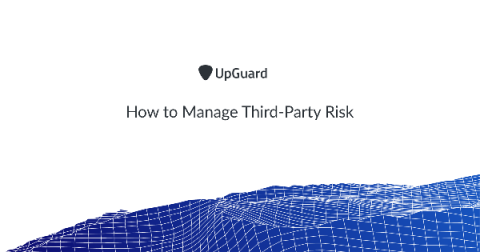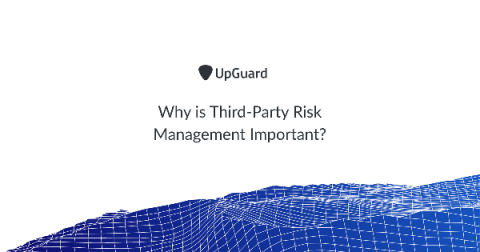Security | Threat Detection | Cyberattacks | DevSecOps | Compliance
%term
How to Manage Third-Party Risk
Engaging with third-party vendors for the provision of goods and services isn't new. The level of digital transformation, paired with the number of third-party relationships and business partners the average organization has is. Third-party risk management programs need to evolve the manage this ever evolving type of risk exposure. Enterprise-wide organizations rely on third and fourth-party vendors. And many of them have access to sensitive data.
Why is Third-Party Risk Management Important?
Globalization and increasing regulatory pressure means more organizations need to examine their third-party vendors, service providers and supply chain in order to assess the level of risk, inform decisions and comply with laws. Failure to adequately assess third-party and fourth-party risk exposes organizations to reputational risk, operational risk, cyber risk, government inquiry, monetary penalties and criminal liability, Ignorance is no longer a valid defense.
Testimonial Video about Ignyte
The HTTP Status Codes You Need to Know
Working on the web means coming into contact with HTTP responses. Whether you spend your time primarily on the client or on the server, you're likely familiar with the popular ones like 200, 404, and 500. While memorizing all the codes using cat memes as a mnemonic can be helpful, let's dive deeper into what some of the most common codes mean.
Best Practices in Cyber Supply Chain Risk Management
Cyber supply chain risk management touches all aspects of a business. Supply chain risk management (SCRM) is not solely the responsibility of cybersecurity, but instead a partnership between sourcing, vendor management, cybersecurity, and transportation. The National Institute of Standards and Technology (NIST) released a set of best practices for cyber supply chain risk management in 2016.
No Relief for Cybersecurity Teams in Sight, Reveals Tripwire's Latest Skills Gap Report
You’ve seen the high-level stats on the cybersecurity skills gap, but I’ll remind you of some of the main ones from the (ISC)2 Cybersecurity Workforce Study: As the gap persists, Tripwire continues to keep a pulse on how the skills gap issue is actually being felt by the security experts who are responsible for defending their organizations from cyber attacks every day.
Cyber Resilience - Everything You (Really) Need to Know
What is cyber resilience? If you search the definition within the Oxford Dictionary, resilience alone is defined as “the capacity to recover quickly from difficulties; toughness.” If you narrow the definition down to cyber resilience, it shifts to maintaining vs recovery. As noted on Wikipedia, it becomes “the ability to provide and maintain an acceptable level of service in the face of faults and challenges to normal operation.”
Top 5 Harmful Cyber Threat Types
Cybersecurity threats are evolving and the IT industry is on high alert. Modern cyber threats are more sophisticated and fast such as malware, phishing, cryptojacking, and IoT threats. The major cyber-attacks in 2019 witnessed that cybersecurity defenses were inefficient to prevent cyber threats altogether. The situation will even prevail in 2020. However, mitigation strategies can help to minimize the chances of data breaches.










